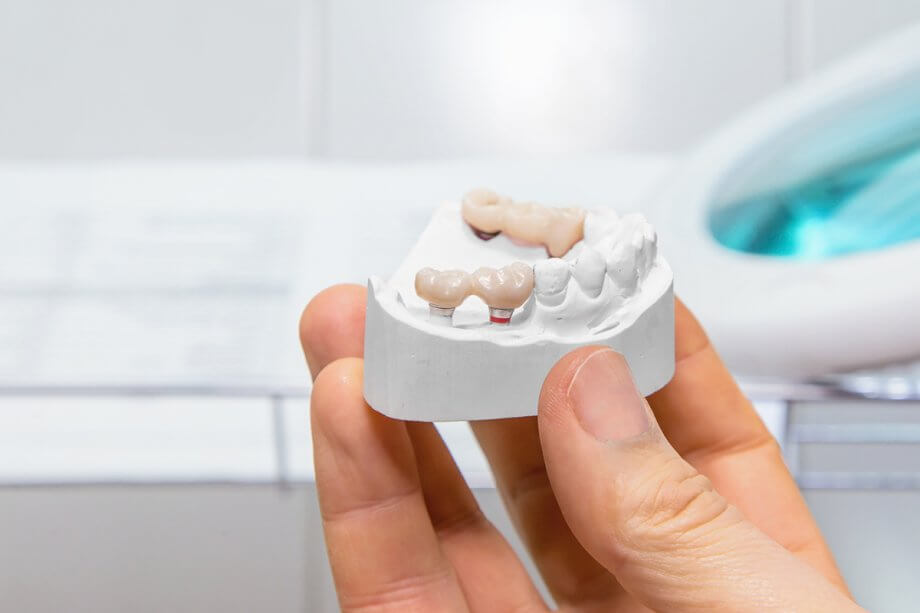If you’re missing one or more teeth in a row, one option for restoring your smile may be a dental bridge. There are four different types of dental bridges available, along with other dental restorations such as dental implants. Read on for an overview of the four types of dental bridges, including the pros and cons of each type
Features, Pros, and Cons of Each Type of Dental Bridge
There are four types of dental bridges:
- Traditional dental bridge
- Cantilever dental bridge
- Dental implant-supported bridge
- Maryland bridge
Traditional Dental Bridge
Traditional dental bridges are the most common type of bridge. Traditional bridges require that the teeth adjacent to the gap in your smile be covered with crowns. Then, an artificial tooth is created to place in the gap between two crowns.
Traditional dental bridges offer benefits such as restored chewing and speech. They also prevent teeth adjacent to the gap from drifting into the gap. Traditional bridges are custom-made to look natural, matching your other teeth in shape, size, and color.
However, a traditional dental bridge will not help to preserve the jawbone beneath the missing teeth, which can be accomplished with dental implants.
Cantilever Dental Bridge
Cantilever dental bridges are like traditional dental bridges, but only one adjacent tooth is crowned because there are only teeth on one side of the gap (missing molars, for example).
The pros of cantilever bridges are the same as traditional dental bridges. However, the main downside of a cantilever bridge is that it is not as strong as a traditional bridge because it is only affixed to one crowned tooth.
Dental Implant-Supported Bridge
Dental implant-supported bridges use dental implants instead of natural teeth that have been crowned to secure the artificial tooth or teeth between them. Dental implants offer benefits including, jawbone preservation, natural look and feel, and the ability to bridge gaps left by three or more teeth.
Dental implant-supported bridges do require implant surgery, making them more expensive than other bridges, and the process can take several months to complete.
Maryland Dental Bridge
A Maryland dental bridge may also be called a resin-bonded bridge. Instead of attaching to dental crowns adjacent to the gap, Maryland dental bridges use metal wings bonded to the backs of your teeth to secure the bridge.
Maryland bridges are discreet, making them a good option for missing front teeth. However, they are not nearly as strong as bridges that attach to crowns or dental implants, so they can’t be used for the back teeth that are responsible for chewing.
Which Dental Bridge is Right for Me?
Your dentist will let you know what your options are for replacing missing teeth. They will consider factors such as the number of teeth that need to be replaced, the health of the teeth adjacent to the gap, your overall oral health, and your personal preference. You may be eligible for more than one type of bridge.
Learn More About Options for Replacing Missing Teeth in Farmington, CT
If you’re missing one or more teeth, Dental Associates is here to help. Our team of experienced dentists has experience in all types of dental restorations including dental bridges, dental implants, and dentures. To book a consultation with our expert dentists in Farmington, call 860-677-8666 .

